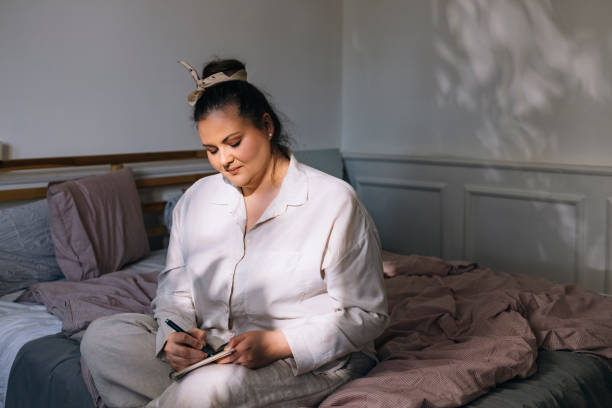
As the dawn of a new year unfolds, it brings with it a powerful opportunity for self-reflection and growth. You will always bring much of yourself with you as you step into the future, but a new calendar can feel like a fresh start to approach your life with authenticity and focus. What choices have you made that align with your sense of confidence and independence? How are you working toward your goals? If you haven’t been prioritizing your self-care and self-confidence, then that is something to leave far behind in 2023.
The “New Year, New Me” mantra resonates deeply, inspiring us all to embark on journeys of personal transformation. For those navigating the complex terrain of codependency, this theme takes on a unique significance. It is difficult to make choices that align with our truest selves when we consider the needs of others before we think of ourselves or when we don’t trust ourselves to make a decision on our own.
What is Codependency?

Codependency is a relational dynamic characterized by an excessive emotional or psychological reliance on a partner, friend, or family member. Individuals grappling with codependency often find their sense of self-worth entangled with the needs and approval of others. This pervasive pattern can lead to a cycle of unhealthy relationships, where personal boundaries become blurred, and the focus shifts disproportionately towards meeting the needs of others.
5 Ways to Put Yourself First This Year
1) Establishing Boundaries:

A boundary is a line that cannot be crossed that correlates with our physical, mental, and emotional well-being. For example, you might have a boundary about what time you need to be home each day in order to get enough sleep. You might have boundaries about how you are spoken to. When you don’t have boundaries, you aren’t able to determine for yourself what your needs are and how to enforce them. Learn to recognize your limits and communicate them assertively.
A boundary not only serves to maintain and protect your wellness, but it allows others to show you respect and courtesy. When you communicate a boundary, it is not about telling others what their boundaries should be, nor is it an act of apology. It is about advising the person or people you are dealing with as to how something works for you. It can be as simple as declining an invitation because you are already overbooked, or it might involve conversation and explanation, such as requesting that certain vocabulary isn’t used around you (i.e., Words you find offensive or schools of thought that you find uncomfortable).
Do not be discouraged if you feel that understanding and establishing your boundaries is difficult. Sometimes, a boundary exists for a simple reason. Other times, our boundaries are convoluted. Do not assume that every boundary will feel great; the idea that you should be excited about boundaries isn’t helpful. For example, you may realize that you need to set a boundary about how often you are able to respond to text messages or phone calls from your partner. This behavior pattern may have emerged out of an anxious attachment to one or both of your parts. You may use semi-constant communication as “evidence” that your partner cares for you and to reassure your partner that you care for them. However, it is not realistic to be available to someone 24/7. Setting this boundary may cause a lump to form in your throat, or you might experience tightness in your chest and a racing heart. It might feel bad to think of not replying to a text message immediately because that is the safe and established pattern. That doesn’t mean you don’t deserve to set boundaries regarding how and when your partner communicates. You shouldn’t have to worry about your phone going off when you are trying to sleep or a meeting running longer than you thought it would, causing your partner to wait for a response past the time you had given. There must be healthier ways to show you care for one another and to show care for yourselves.
2) Prioritizing Self-Care:

Develop a self-care routine that aligns with your needs, whether regular exercise, mindful meditation, or simply dedicating time to activities that bring you joy. Even if, at first, you feel awkward doing so, keep going. Sometimes, a “fake it till you make it” approach can work wonders for getting us into a beneficial routine. Over time, you will discover that you can register the benefits you are experiencing, and the improved mood and energy that accompany them make it easier to set aside time to invest in yourself. In this way, caring for yourself enables you to continue to care for yourself.
Codependency often emerges as a trauma response; you are seeking comfort or regulation from an external source. Self-care combats the idea that the source of your happiness and comfort is external. It may feel foreign at first to unpack what you thought about codependency and replace it with independence, but over time, you will begin to see how nurturing yourself benefits you more than relying on others for happiness ever could.
Self-care is an intentional set of guidelines and parameters you establish to meet your needs. It begins with the basics needed to keep you going: food, hydration, sleep, and shelter. If you make a rule for yourself that you cannot forego these things, how does that impact your relationships? Are you up too late communicating with friends and family? Do you skip meals running out the door to make it to events that are important to your significant other? Do you make sure to drink enough water and move your body, even when nobody’s watching? These habits are an investment in yourself.
What brings you joy; when was the last time you took a class, saw a show, or did something that brought you satisfaction? Spend time participating in activities that inspire you and replenish your spirits. Choose something that you can do alone and do it. Go to a movie, take yourself for ice cream, go to paint night. Show yourself that you are able to have a good time without the company of others. This doesn’t mean you’ll never participate in another group activity. It means you know you don’t need company, so you can choose if you want it.
Make time for rest! Space to recalibrate, be alone with our thoughts, process our days, reflect, meditate, and exist without worrying about how we appear to another human being is very healing.
3) Cultivating Self-Awareness:

Yes, there are two people involved in every co-dependent relationship. The person or people you are in a codependent dynamic with might feel intent upon keeping it that way, but they are not within your control. You are the person who can take responsibility for your actions, choices, boundaries, and communication. By cultivating self-awareness, you can identify and challenge codependent patterns, paving the way for personal growth and a deeper understanding of your authentic self.
Sit with yourself and explore your thoughts about codependency. Be gentle with yourself and try not to judge your thoughts and realizations as you delve into the reasons you feel you may be developing this dynamic in your relationships. When did codependency begin? Is it the norm in all your relationships, or does it appear more with authority figures, caretakers, romantic partners, and friends? Whether you explore these issues on your own, in therapy for codependency, or utilizing a combination of both, it is important to create space to let your discoveries come to you and exist without trying to suppress or reject them.
Codependency, like all relationship dynamics, has highs and lows. Part of the way you can identify patterns is by considering the times when you feel more anxious about your relationship. Are there times of year in which codependency feels more inherent? Are there situations that spark more of a need for that kind of connection?
If you have trouble looking at your behavior from an objective point of view, imagine you are someone else doing a paper on you. What would this person observe? Would this person see specific actions taken, and how would this person evaluate your emotional response to these things? How many times would this person see you ignore a boundary? Sometimes, we tell ourselves, “Oh, this isn’t a big deal,” or, “I’m being too sensitive.” Would someone else say the same thing about you? Imagine, if you can, someone telling you, “That is a big deal!” Would you feel seen and understood? Would you feel that you had permission to stick to your boundaries? Can you imagine a world where you are able to affirm your needs for yourself?
4) Learning to Say ‘No’:

Practice setting boundaries and saying ‘no’ when needed, understanding that it is a positive and necessary step toward prioritizing your well-being. If you were socialized as a female growing up, you are likely to be particularly adverse to not being seen as helpful and accommodating.
Declining to do something, whether it’s to help out with something, show up somewhere, set time aside, or forgo other plans, isn’t just about what you’re saying “no” to. When you decline what isn’t for you, you say “yes” to what is for you. Saying “no” to the wrong thing makes room for the right things, the best things, the exciting things, the healing things. You are not responsible for changing your wants and needs to suit others. Yes, compromise is a part of life, but it’s not meant to be a daily occurrence of you compromising.
No, it is a full sentence. If you are not in a dynamic where you can decline something without the other person guilt-tripping, pressuring, shaming, or neglecting you, that is something to be aware of. You have full permission to say ‘no’ to things that make you uncomfortable, things you don’t have time for, and things you haven’t had enough time to consider. If you are worried that saying ‘no’ will cost you certain relationships, remember that relationships of respect offer mutual support and acceptance. You should feel safe to say ‘no.’ It doesn’t mean that it will be your answer to everything. But you deserve the right to say it when you mean it.
Practice saying ‘no’ to smaller bids at first. Say ‘no’ when you feel the stakes are low, and work your way up to declining bigger offers. You can decline politely, such as, “Thanks for thinking of me, but I’m unavailable.” You may opt to keep it short and sweet: “No, thank you.” Practice in the mirror, in the car, while you’re out for a walk. Make yourself familiar with saying no, so familiar that you don’t hesitate to decline, delay, or make a counteroffer.
5) Seeking Therapy for Codependency:

A qualified therapist can help you navigate the challenges, provide tools for breaking codependent patterns, and empower you to build healthier, more fulfilling relationships. Our patients who come for codependency therapy in Woodland Hills do so for a variety of reasons. They may attend codependency therapy for the first time earlier in life, later in life, or somewhere in between. They may be partnered at the time or not.
Therapy can be especially beneficial if you recognize patterns but aren’t sure how to break them. It can provide you with a safe space to try out responses to questions and deliberate and consider your boundaries. Most of all, therapy allows you to empower yourself, as it works best when you act on your own behalf.
You may experience guilt and shame as you move away from codependency; a therapist can help you come to terms with those emotions and recognize your worthiness of experiencing independence and self-determination.
If you attend therapy with the person with whom you are in a codependent relationship, be prepared to speak openly and honestly about how you feel and to listen with an open mind to what the other person has to say. It is through curiosity that we are able to understand one another. If you are both committed to continuing your relationship, therapy will give you the tools to build a healthier attachment. Together, you can establish how best to invest in one another without becoming so intertwined.
Putting yourself first is not only the way to live the life that is best for you, but it ultimately enables you to give more to others. Too often, we worry that looking after ourselves will completely take the place of looking out for others, and we don’t like how that feels. Self-care and integrity allow us to show up and be present, dependable, committed, excited, and more. When we strive to do what suits us best, we ultimately make choices that align with our highest values. Therefore, we are able to give more to the people and things we decide to invest in.
Therapy for Codependency at Woodland Hills
Relationships come with red and green flags, and sometimes, it can be hard to distinguish them. Without the right tools for healthy communication and healthy boundaries, you are at risk of developing codependency. At Embracing You Therapy practice in Woodland Hills, CA, your therapist for codependency will help you better understand what drives your codependency, unpack any childhood experiences with your parents that contributed, and guide you in developing a secure attachment to others. Contact us today for your complimentary 20-minute phone consultation with our Admin Team today!




